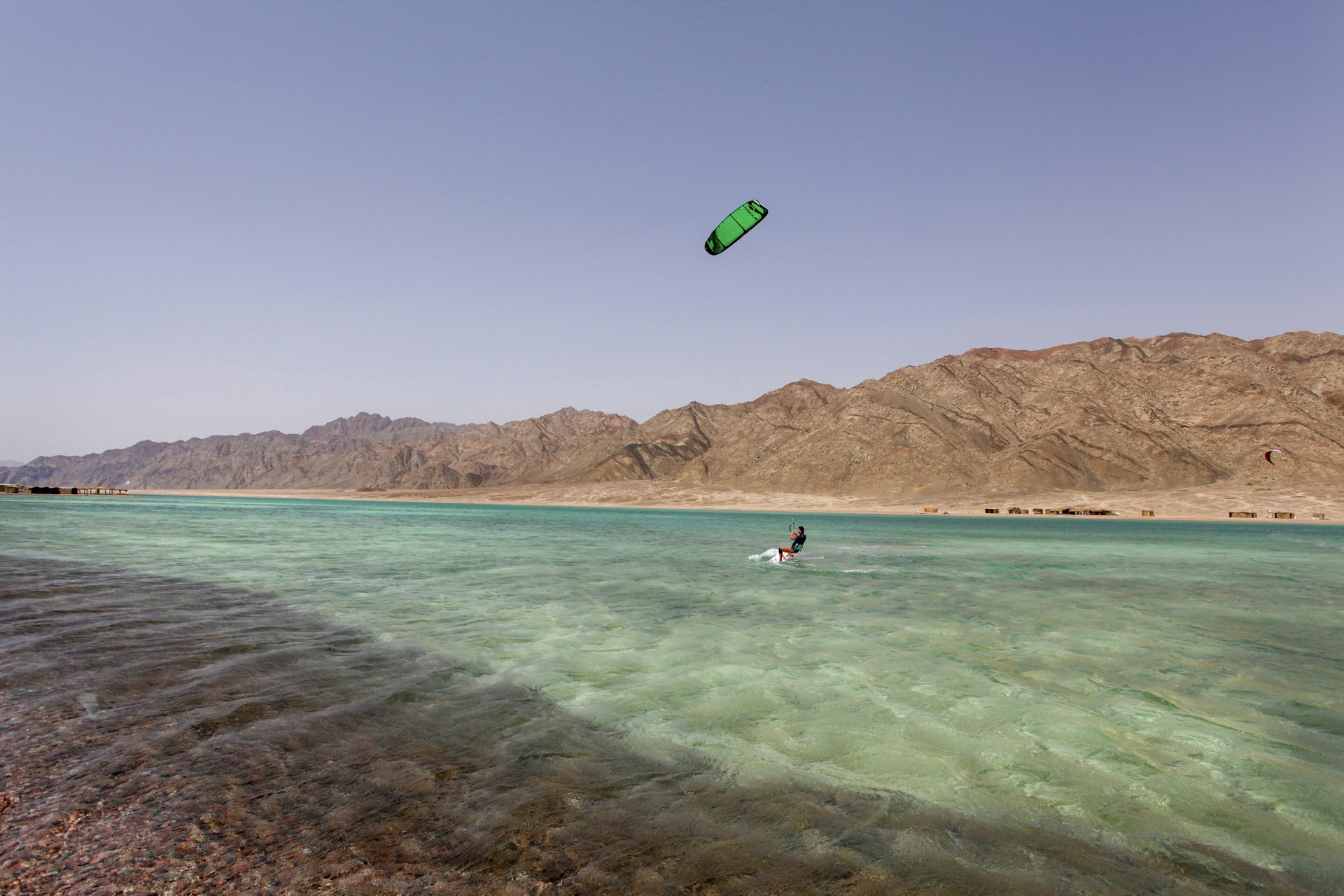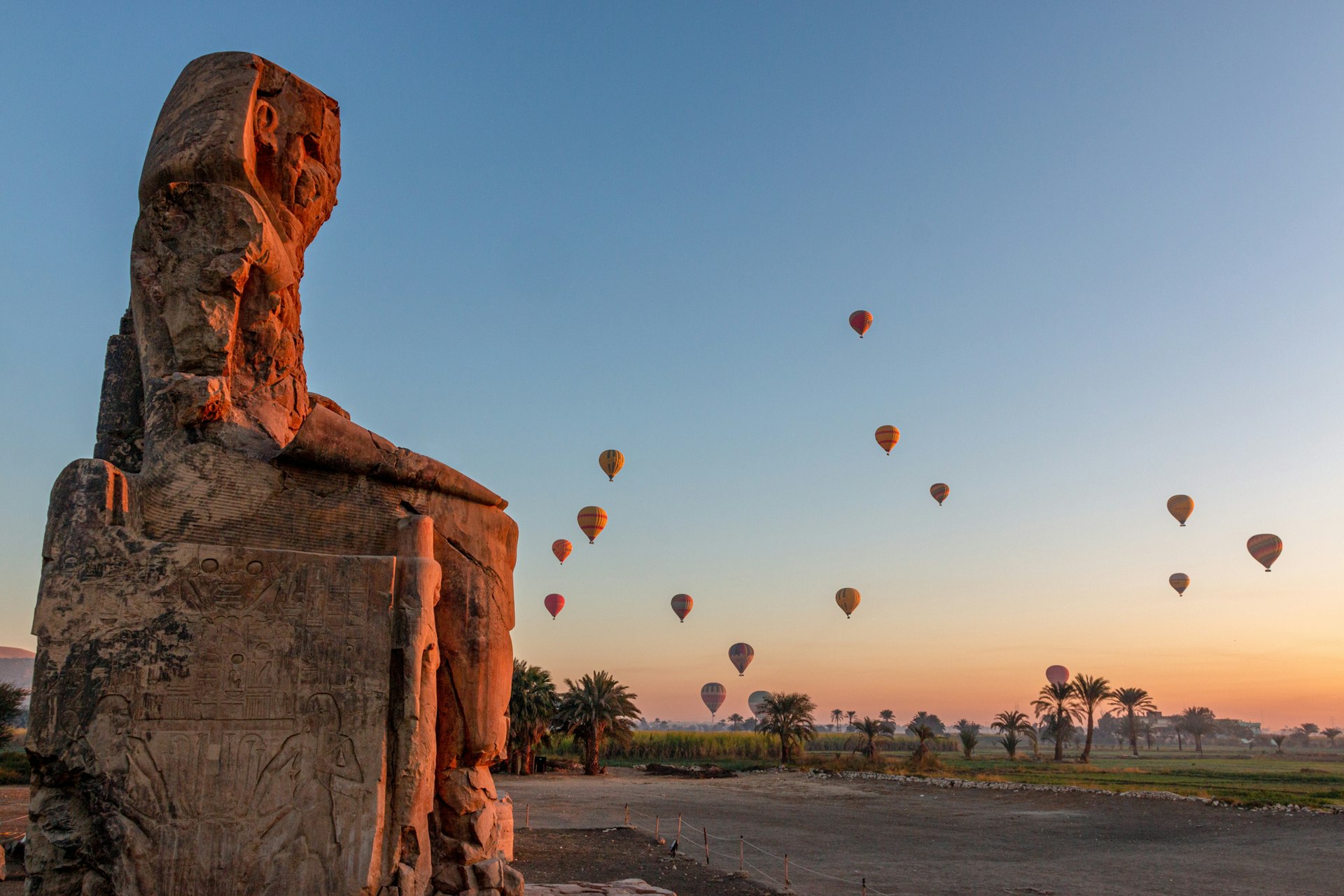One day you’re climbing the desert’s highest peak, the next you’re walking amid remnants of the world’s oldest civilization or diving into the depths of the Red Sea. Whether Egypt‘s on your travel radar for the history, the adventure, the beaches or even just the pyramids, when it comes to things to do, you are spoiled for choice.
Here’s our guide to Egypt’s very best experiences.
1. Have breakfast at the pyramids
8. Why not kick your visit to the pyramids up a notch with some falafel, hot mint tea and a vast picture-perfect panoramic view of the ancient wonder? Head to the 9 Pyramids Lounge for influencer-worthy photo ops and a solid Egyptian breakfast of freshly baked bread, feta cheese or a Tahini salad.
2. Watch an authentic Tanoura performance in Cairo
Old Cairo is also home to the beautifully restored Wekalet el Ghouri Arts Center that hosts a wide array of cultural events. Here you can see an unforgettable Tanoura show – a whirling dervish performance that merges Egyptian folklore and Sufi spiritual chants. This colorful and mesmerizing one-hour experience is a must-see for anyone visiting Cairo.
Planning tip: The show runs every Monday, Wednesday and Saturday at 7pm, but make sure to show up at 6pm to snag your tickets before they’re gone.
3. Experience Egyptian street food at Cairo’s Kebdet El Prince
Situated in the heart of Cairo’s Imbaba neighborhood is Kebdet El Prince, a haven of Egyptian street food with a side of quintessentially Cairene sensory overload. This bustling joint is ideal for anyone looking to experience Egyptian street food.
Start with the basics: molokhia (jute mallow), kebda (liver), and sogo’ (sausage). More adventurous foodies should try mombar (stuffed sausage), makhasi (bull tesitcles) and shorbet kaware’ (cow’s foot soup).
Detour: If you can still breathe, have dessert next door at El-Malky and top it off with a mint tea from the cafe across the street.
4. Wander through the alleys of Old Cairo
The ancient streets of Old Cairo are mazes of narrow alleys filled with monuments, mansions, museums, and mosques. Start at El Moez Street and soak in how the rich architectural, religious and cultural history fuses with the vibrant din of daily local life in this bustling neighborhood.
Walk until you reach the Khan El-Khalili bazaar where you can shop for everything from soap powder to ornate clothing and small trinkets. Then head to Bab Zuweila – one of three remaining gates from the Old City of Cairo.
Planning tip: Time your arrival to watch the sun setting over the ancient buildings from the towering minarets of Bab Zuweila – one of the best views you’ll find in the city.
5. Camp in the Fayoum Desert
Disconnect from the mayhem of modern life with desert camping in Fayoum. Experience the dunes on a 4WD safari ride with stops at the Wadi el Rayan waterfalls and the crystal blue lakes in the middle of the desert, and top it off with a freshly prepared Bedouin dinner under the stars. Wear comfortable walking shoes and bring a light jacket if your trip is in the summer; for winter, pack your whole closet – the desert gets cold at night. Fayoum is just two hours south of the capital, so this trip can easily be done as a weekend getaway from Cairo.
Planning tip: For an optimal night of clear stargazing without light pollution, time your visit to Wadi el Rayan or Wadi al Hittan (Valley of the Whales) for when there’s no moon.

6. Go kitesurfing at the Blue Lagoon
Time stands still at the turquoise Blue Lagoon. Located between the shadows of the Sinai Mountains and the crystal waters of the Red Sea, the Blue Lagoon has flat waters and strong winds, making this Red Sea sweet spot a kitesurfer’s paradise.
Novices can book a private kitesurfing course upon arrival. If you’re not into kitesurfing, the Blue Lagoon is a perfect spot to do absolutely nothing by laying on the beach, enjoying the sea and serenity.
7. Float in Siwa’s picturesque Salt Lakes
Picture this: floating in a perfect pool of crystal blue waters in the middle of the desert, surrounded by shimmering towers of sea salt. The Siwa’s salt lakes have long been a treasured local spot. Float effortlessly in an otherworldly pool with the highest water to salt ratios that’s not just picture-perfect, but it’s said to clear sinuses and treat infections.
Siwa Oasis is dotted with hundreds of turquoise salt pools – a stark contrast against the oasis’ palm greens and desert yellows, all laid against the backdrop of stunning sunsets that earned it the title of Sunset Oasis.
Local tip: Keep a few bottles of clean water with you to wash the layers of salt off your body and avoid any skin irritation. Or, even better, go for a dip in Cleopatra’s Spring afterward.
8. Snorkel or dive in the Red Sea’s Sataya Reef
Marsa Alam is great base for divers looking to discover the riches of the Red Sea. Horseshoe-shaped Sataya Reef ranks as one of the most beautiful dive spots on the planet, with its striking sea life and colorful corals. This wonder of the natural world is suitable for snorkelers too.

9. Temple hop in Luxor
Luxor, the world’s greatest open-air museum, is a testament to the ancient Egyptian civilization through its sheer wealth of temples and monuments.
Begin your temple-hopping at the Temple of Karnak – the perfect manifestation of pharaonic ambition. A few kilometers southwest of Karnak is the stunning Luxor Temple. If you can, visit at night when the temple lights are turned on. About 40 minutes northwest of the Luxor Temple lies The Valley of the Kings – a popular tourist destination and includes the tombs of Ramses III, Seti I and Ay.
At the southern portion of the Theban hillside and about 7km (4mi) from the Valley of the Kings is The Valley of the Queens. A 75-tomb area that includes the final resting places of Nefertari and one of the five wives of Ramses II.
Detour: Other major points along the way include: Queen Hatshepsut’s Temple, the Luxor Museum and Ramses III’s Medinat Habu on the West Bank.
10. Eat like an Egyptian with a local food tour in Cairo
Food is an international love language and Cairo is bursting with culinary gems, but where do you start? What do you try? Where do you go? Connect with local culture on a food tour where you immerse yourself in Egypt’s history and local life, one authentic dish at a time.
Ideal for solo female travelers, Bellies En-Route is a female-owned food tour provider that skips the culinary tourist hot spots and takes visitors to local mom-and-pop spots or neighborhood favorites known for fantastic street fare. You can even help out in the kitchen at some of the restaurants, an excellent opportunity to connect with the community while preparing food.

11. Float above Luxor in a hot-air balloon
Dozens of balloons take to Luxor’s skies every day at dawn for a view that’s literally breathtaking. Watch the sun rise and light up the Theban hills, local farms and ancient monuments. See the Nile River glistening in the distance and wave at locals watching from their balconies. Trust us, it’s definitely worth that 3am wake-up call and pre-ride anxiety.
12. Take a sunset felucca ride along the Nile
The world’s longest river is best experienced floating peacefully in a felucca (traditional wooden sailboat) at sunrise or sunset, whether you’re in Cairo or Aswan or anywhere in between.
In Cairo, docks line the corniche in Maadi, Zamalek and Garden City, and give you a gorgeous view of the Cairene skyline; if you’re in Aswan, feluccas are your go-to mode of transportation between the city’s 20 islands. Either way, grab a few friends, snacks, and drinks and spend some time taking in the stunning serenity of the Nile.
13. Hike the Sinai Trail or Red Sea Mountain Trail
Experience Egypt’s most iconic mountain peaks and untrodden wildernesses by hiking alongside local Bedouin guides through the country’s two sister trails: the Sinai Trail and the Red Sea Mountain Trail.
The Sinai Trail is Egypt’s first long-distance hiking trail, a circuit that runs 550km (342 miles) through the territories of the eight Bedouin tribes of South Sinai. The 170km (106 mile) Red Sea Mountain Trail, located just outside the beachside resort town of Hurghada, showcases the best of the region’s inimitable beauty – from vast desert plains to deep gorges, and from crumbling Roman towns to prehistoric rock art and chapels of Egypt’s Desert Fathers.
Local tip: Both trails are sustainable tourism initiatives that directly support the local Bedouin communities by creating jobs and help keep the region’s traditional Bedouin knowledge, skills, and heritage alive. And don’t worry, the trails are divided into segments so you can choose whether to take between two- and five-day hikes as part of your trip.

14. Dive and snorkel near Dahab
Dahab, South Sinai’s token beach town, is ideal for divers and snorkelers to experience mind-blowing marine life. If you’re not already a qualified diver, you can start your PADI certification process at one of Dahab’s many dive centers.
A few kilometers north of Dahab is Egypt’s Blue Hole, a submarine sinkhole that drops straight down to a depth of over 100m (328ft), and attracts experienced divers from all over the world. It’s a fascinating but risky dive that’s unfortunately claimed many lives, and it should be left to pro and advanced divers only.
15. Relax with the view from Castle Zaman
Come for the view, stay for – well, the view. This medieval-style castle that’s actually a slow-food restaurant, is nestled between Sinai’s signature mountains and lies somewhere between Nuweiba and Taba by the Gulf of Aqaba – an unparalleled vantage point across the Red Sea that spans the shores and mountains of Egypt, Jordan, Israel, and Saudi Arabia.
Spend a full day at Castle Zaman chilling in the pool, having a drink at the bar, and enjoying a slow-cooked lunch or dinner that includes items like a meat tagine or the catch of the day. Although Castle Zaman doesn’t offer overnight accommodation, you can make use of its amenities such as the sauna and massage treatments.
Planning tip: And for an overnight stay, head to Dayra Camp, a collection of wildly decorated straw huts and wooden bungalows located in the coastal town of Nuweiba – just 23km (14mi) away.
